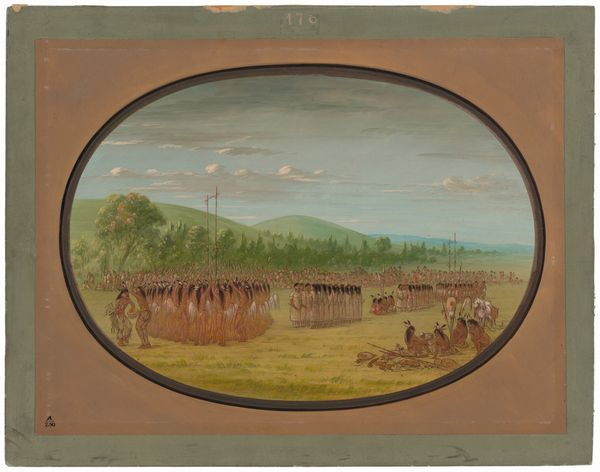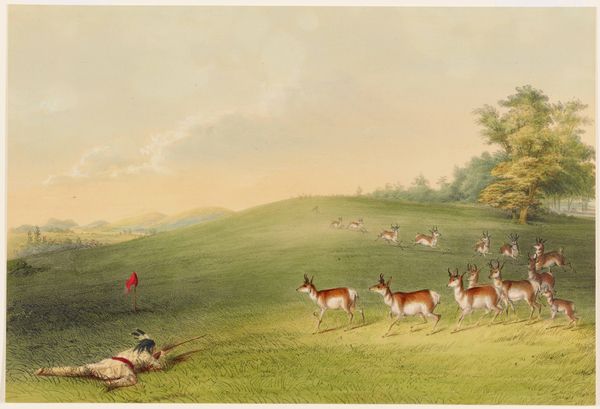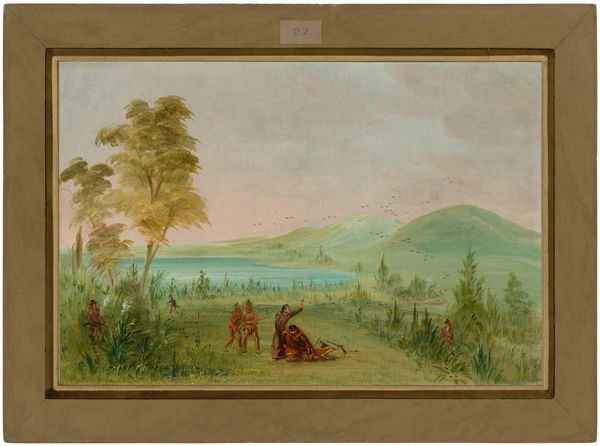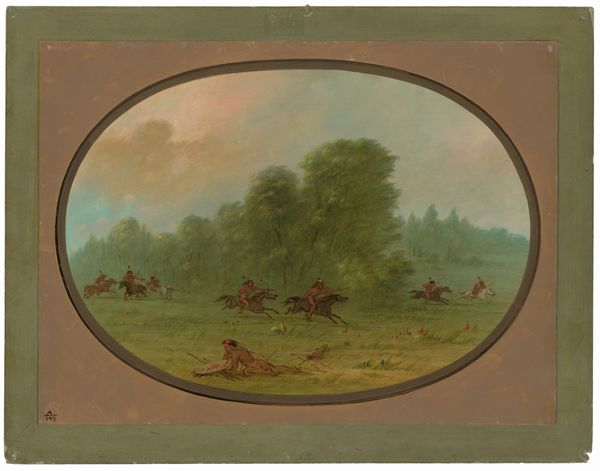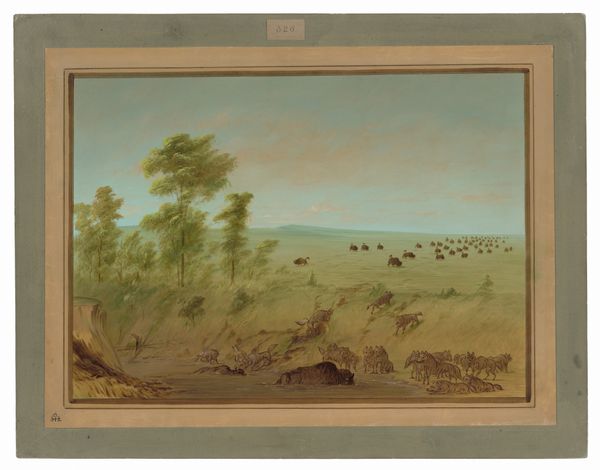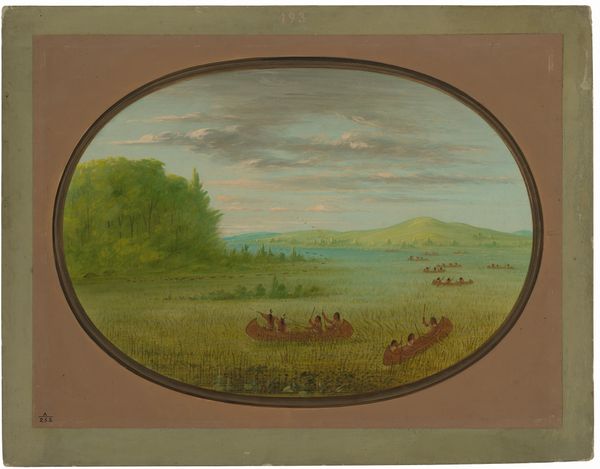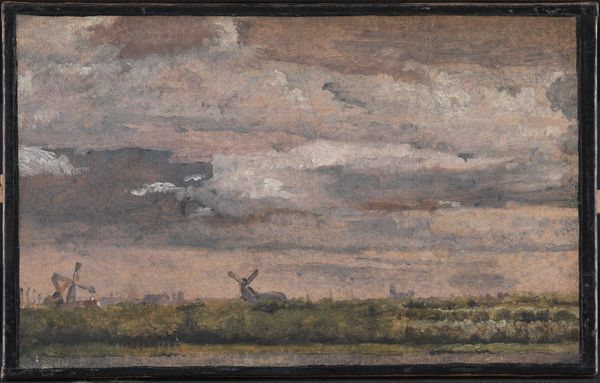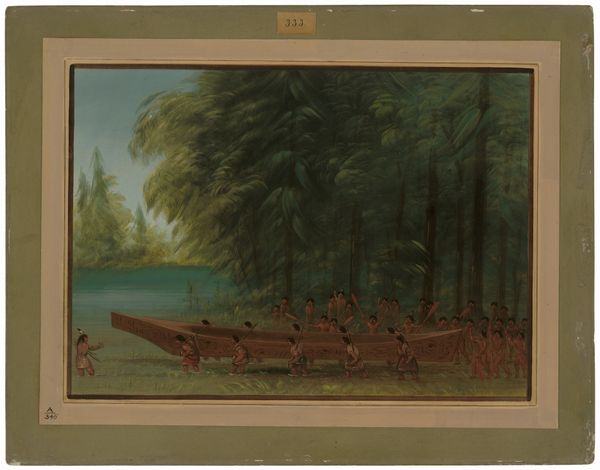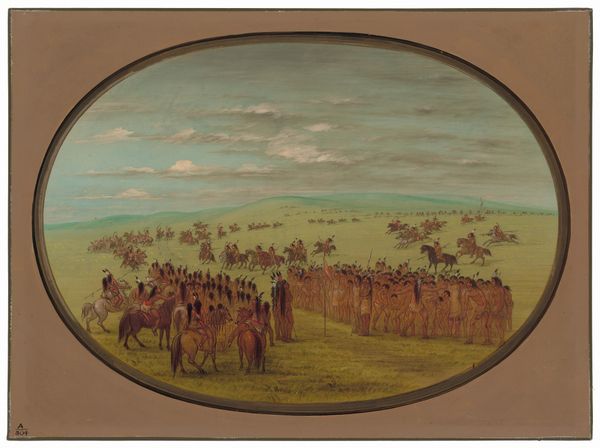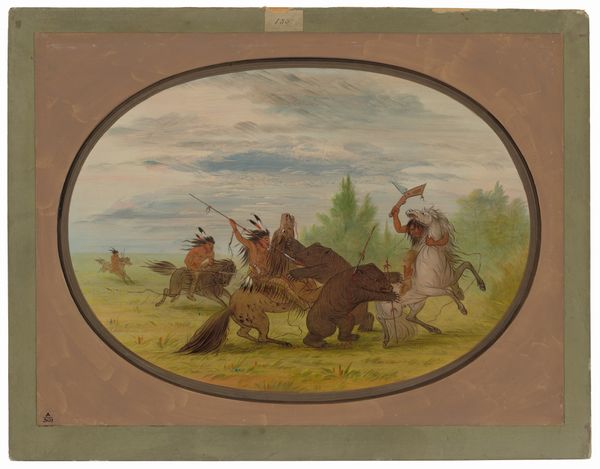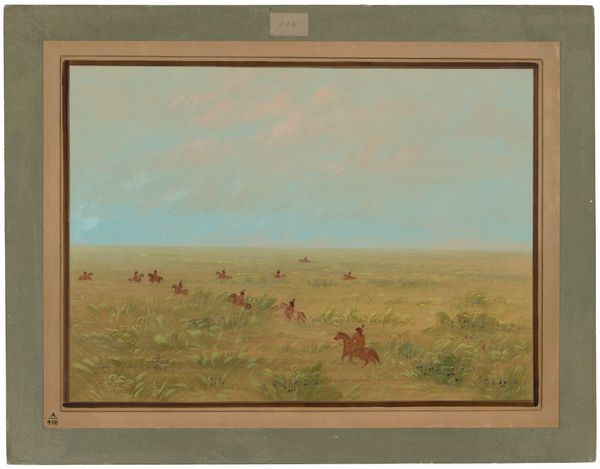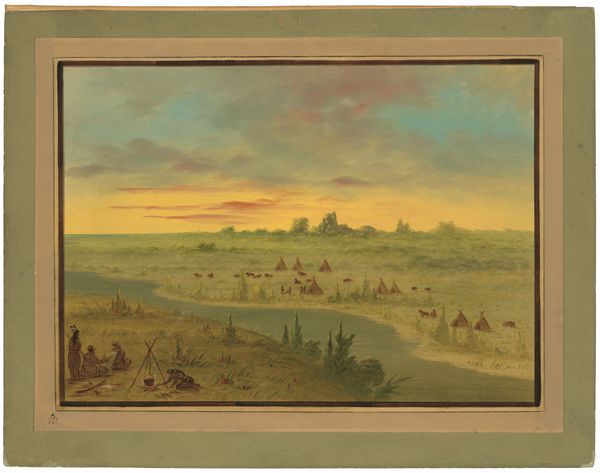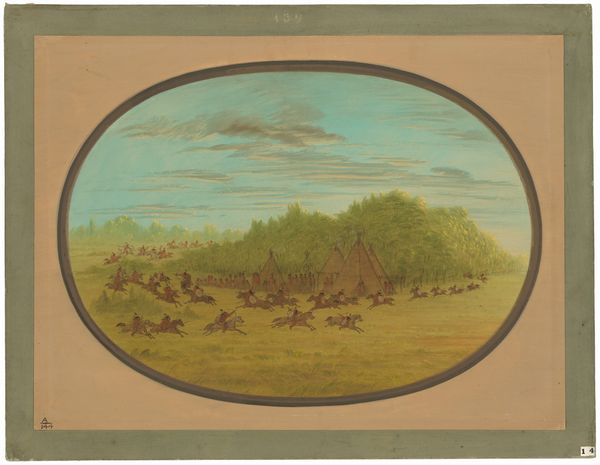
painting
#
water colours
#
narrative-art
#
painting
#
landscape
#
watercolour illustration
#
watercolor
Dimensions: overall: 45.3 x 63 cm (17 13/16 x 24 13/16 in.)
Copyright: National Gallery of Art: CC0 1.0
Curator: I’m struck by the tranquility, despite the violence it depicts. The sweeping landscape and muted color palette create a rather peaceful aesthetic, wouldn’t you say? Editor: That's a compelling observation. Let's delve deeper into this piece. The work we’re looking at is titled "Antelope Shooting - Assinneboine" by George Catlin, likely created sometime between 1861 and 1869. Catlin, known for his depictions of Native American life, used watercolours here, a medium that lends itself to both delicacy and vibrant detail. Curator: Indeed. And when viewing it from a historical perspective, consider the romanticized yet fraught narrative of the “Wild West,” so crucial in shaping American identity. Here we see that interplay between the Indigenous population and westward expansion. Editor: Note the clear distinction in textures, from the tall grass in the foreground to the soft focus of the distant hills. This contrast visually echoes the separation of the hunter from their prey and creates depth. What of the red flag near the prone hunter? It stands out markedly against the muted green and brown. Curator: That red flag serves, paradoxically, to both draw attention to the hunter and signal their presence to the antelope. This could represent a strategic technique or possibly reflect something symbolic, pointing to the relationship between the Assinneboine and their environment. Was it an act of respectful hunting or a foreshadowing of inevitable conflict? Editor: I see the way that you contextualize the image by thinking about gendered violence within the setting, and that opens many ideas about interpreting Catlin's decisions here. But even isolating elements such as the placement of the herd, neatly distributed across the sloping plane, leads me to focus on the overall equilibrium that guides the aesthetic considerations. Curator: Yes, this visual harmony invites the viewer to meditate on themes of coexistence, adaptation, and cultural contact that played such an enormous role in our understanding of the West. Editor: The balance found here through these carefully placed aesthetic elements is what truly stands out for me upon a close visual analysis. Curator: Understanding its context through Indigenous narratives expands the reach of our critique beyond merely the pictorial. It encourages the exploration of themes concerning power, representation, and survival that speak to contemporary social concerns. Editor: True, the layered effect prompts the viewer to see beyond the immediacy of the image, whether it is about identity or material presence.
Comments
No comments
Be the first to comment and join the conversation on the ultimate creative platform.
